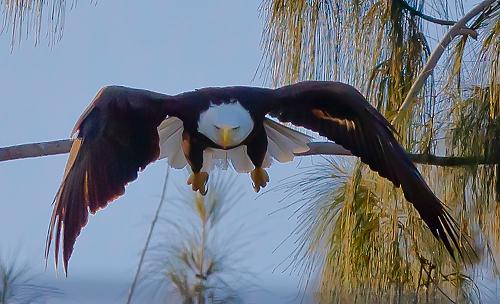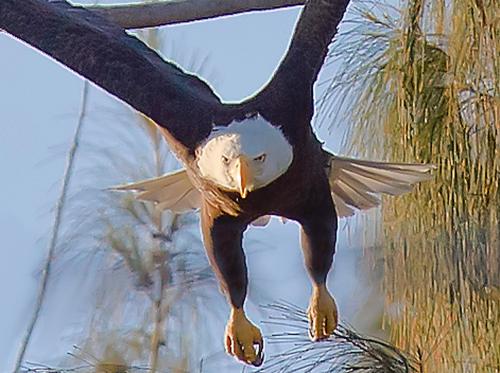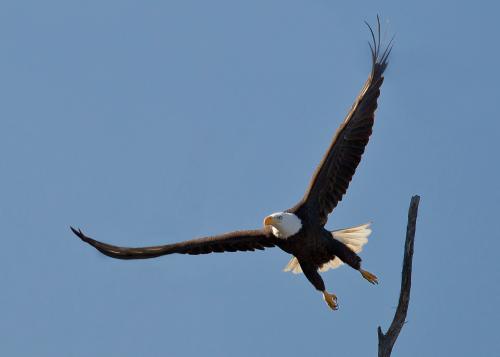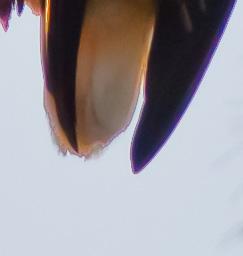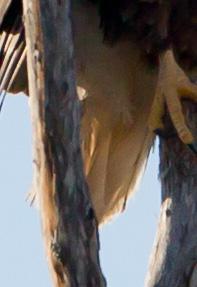I arrived 7:40am Sunday, January 9th, the sun was bright, and wind from the north. All of my observation occurred over a hour's time. It's often an opportunity for good BIF pics given the observations are from the north as the wind direction -- there is a better chance the eagles will launch into the wind toward the camera. And as it happened, I was able to snap a few of both the female and male leaving perches from: overhead, east, and west of the nest. When I first arrived the female was flying away from a perch somewhere beneath the nest. After a circle that took her east then back close to the nest, she landed on a branch above the nest as shown in the first pic. The particular picture shown shows the male calling to the female as he looks up at her. (I can only imagine he is thinking it’s her turn back on the nest.) After a short while and additional “bird discussions,” sure enough the female flew around again from her perch above the nest and landed in the nest. It was difficult to actually see the swap of duties, as within just a few moments, the male left and appeared at their favorite perch east of the nest in an Australian Pine.
The male stayed for a spell and then flew around in the local area. He crossed the road north and headed over the homes and then came back shortly. I believe he went by the nest on his return, but did not stop until he landed in the dead melaluca trees. Soon the male left the trees and headed south.
I have included some pics of the tail feathers as I have based my comments about female and male from identifying the male with dark colorations on the tips of his tail feathers. So far I haven’t noted anything especially distinctive otherwise, other than size which is hard to determine if they aren’t together. The female pics are the first ones and the male begins with the close-up (1/2 length) perched in the tree. Jim



